![]()
Five years after beginning its very long journey, NASA’s Juno spacecraft has beamed back photos of Jupiter’s poles for the first time… and they’re stunning.
Juno, which is as large as a basketball court, travelled 415 million miles over the last 5 years to send us a first look at the extremities of the gas giant—so-called because it’s composed mainly of hydrogen and helium. These images, captured using the spacecraft’s JunoCam, show the planet’s obscure auroras and unique cloud formations.
But before we dive into the photos, let’s meet the camera:
![]()
“JunoCam is a wide-angle camera designed to capture the unique polar perspective of Jupiter offered by Juno’s polar orbit,” says a research paper from Southwest Research Institute, San Antonio, TX. “JunoCam’s four-color images include the best spatial resolution ever acquired of Jupiter’s cloud tops. [It] will look for convective clouds and lightning in thunderstorms and derive the heights of the clouds. [It] will support Juno’s radiometer experiment by identifying any unusual atmospheric conditions such as hotspots.”
This is the camera system that is currently peering at the poles of the largest planet in our solar system as Juno flies by on pass after planetary pass. The camera system that captured the images seen below:
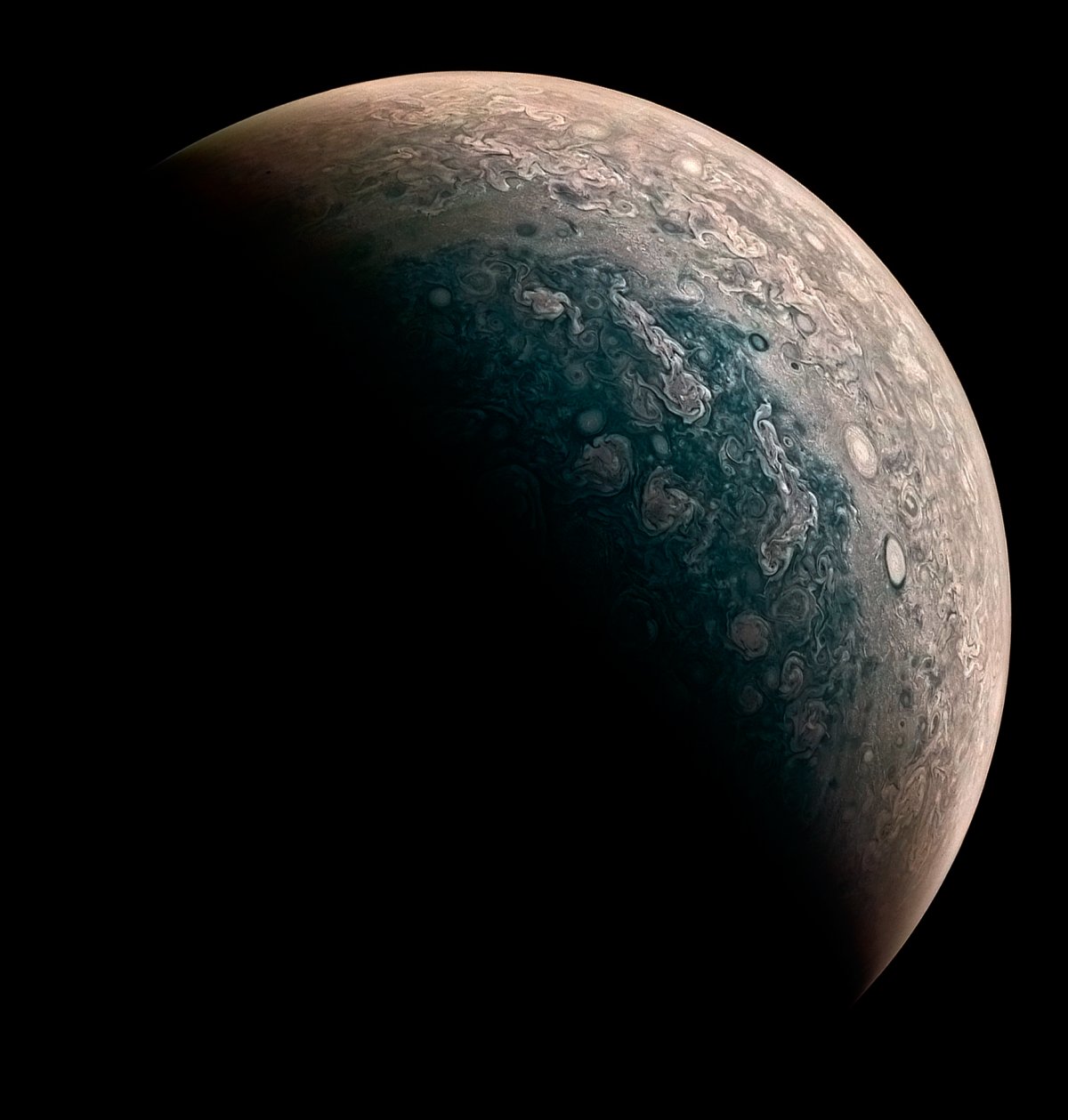
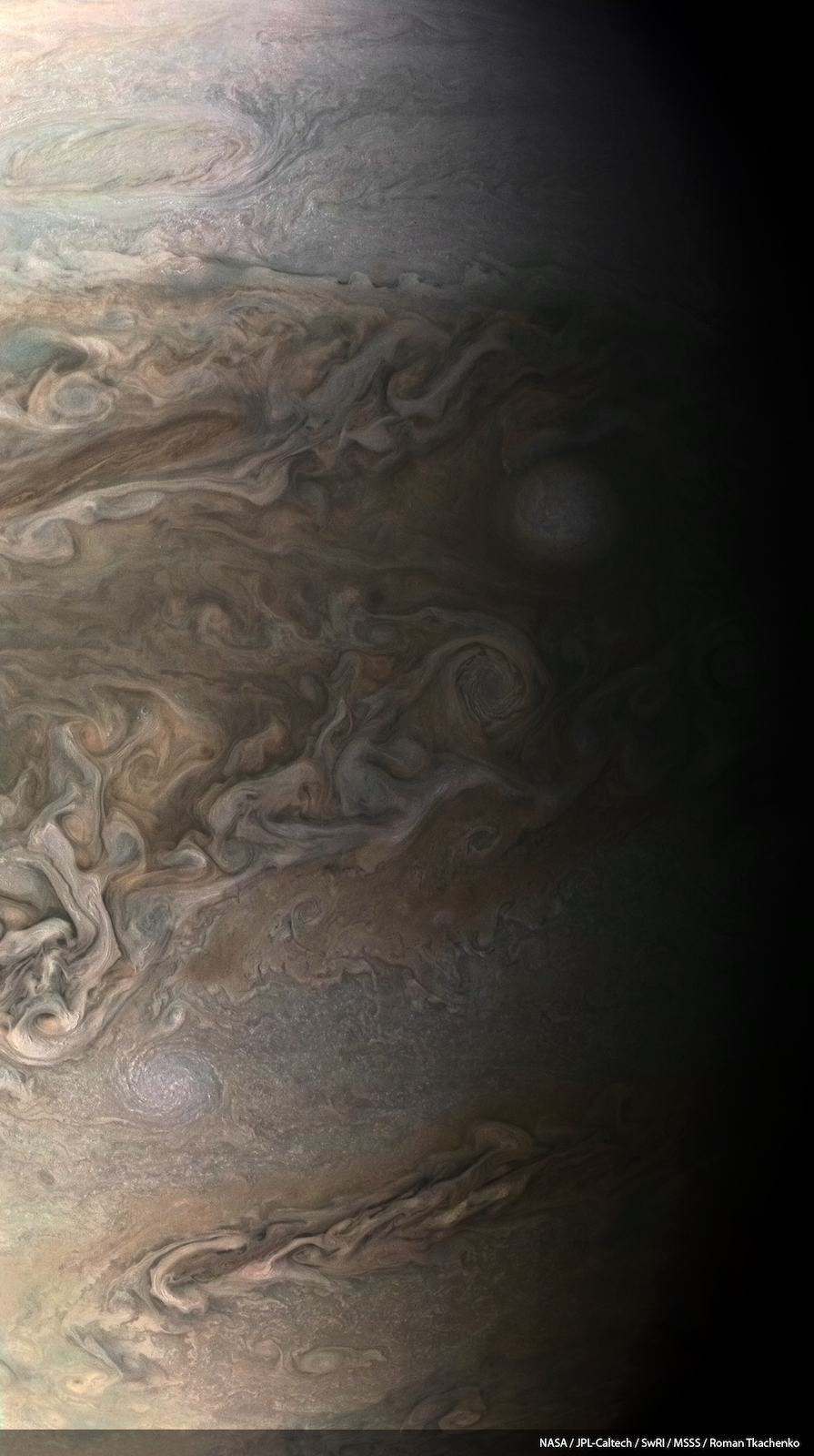
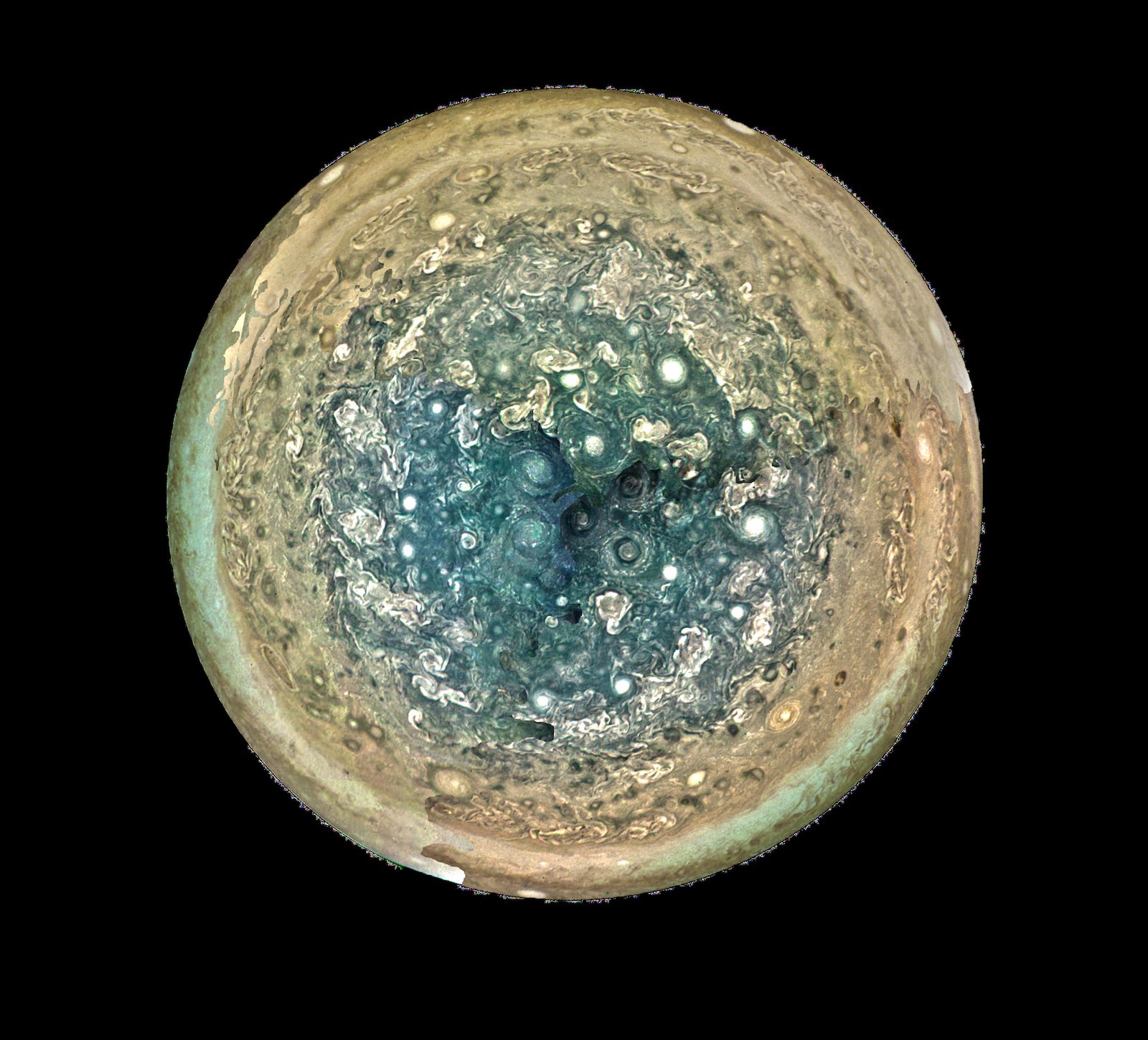
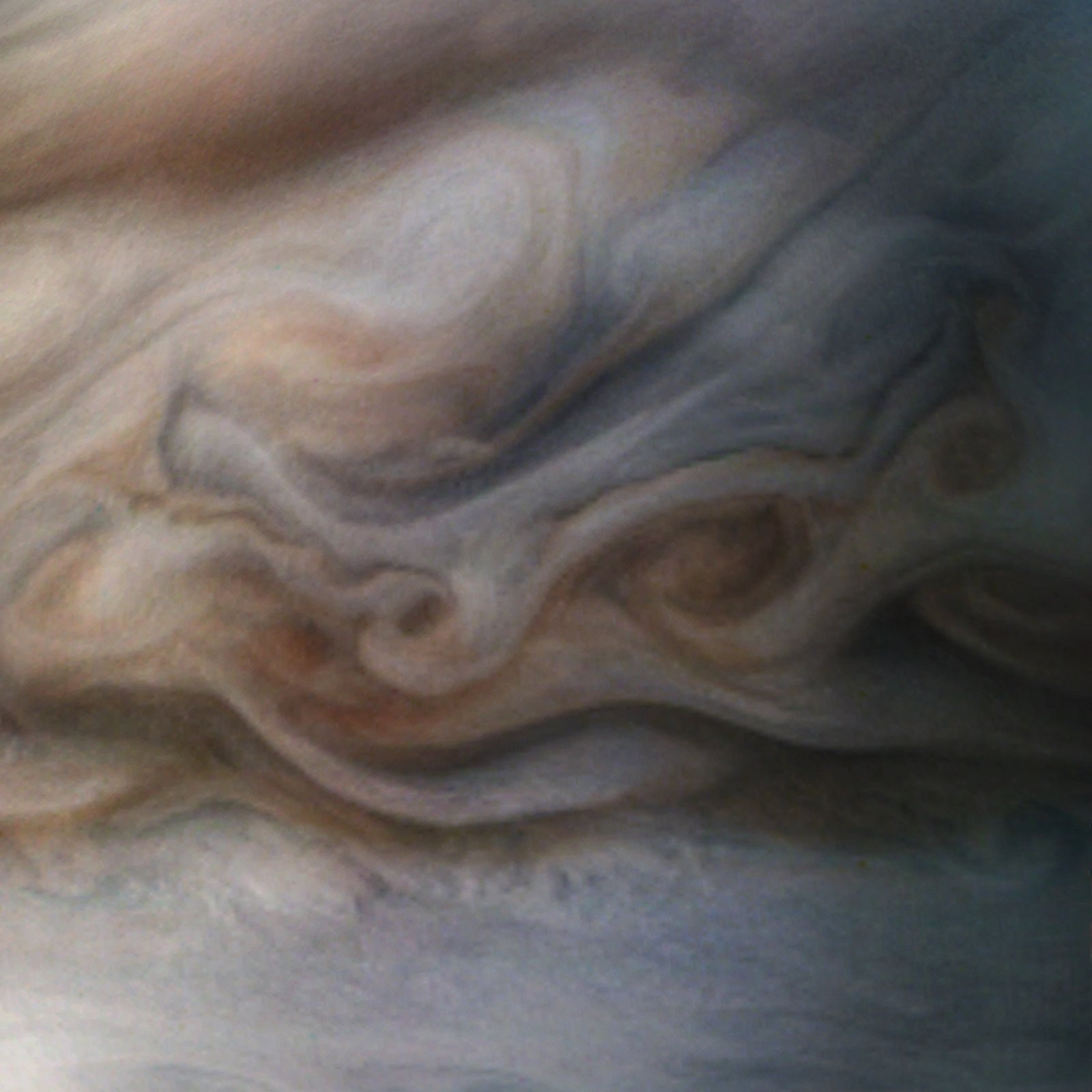
It’s important to point out that the photos above, the images you (and most of the public) are browsing online, are not the original RAW images Juno is sending back. Rather, they are images processed and enhanced by amateur astronomers.
“Citizen scientist Jason Major enhanced the color and contrast in this image, turning the picture into a Jovian work of art,” says NASA describing the photo below, which was taken on March 27. “He then cropped it to focus our attention on this beautiful example of Jupiter’s spinning storms.”
JunoCam’s original RAW images are available for the public to peruse and process at NASA’s https://www.missionjuno.swri.edu/junocam/processing
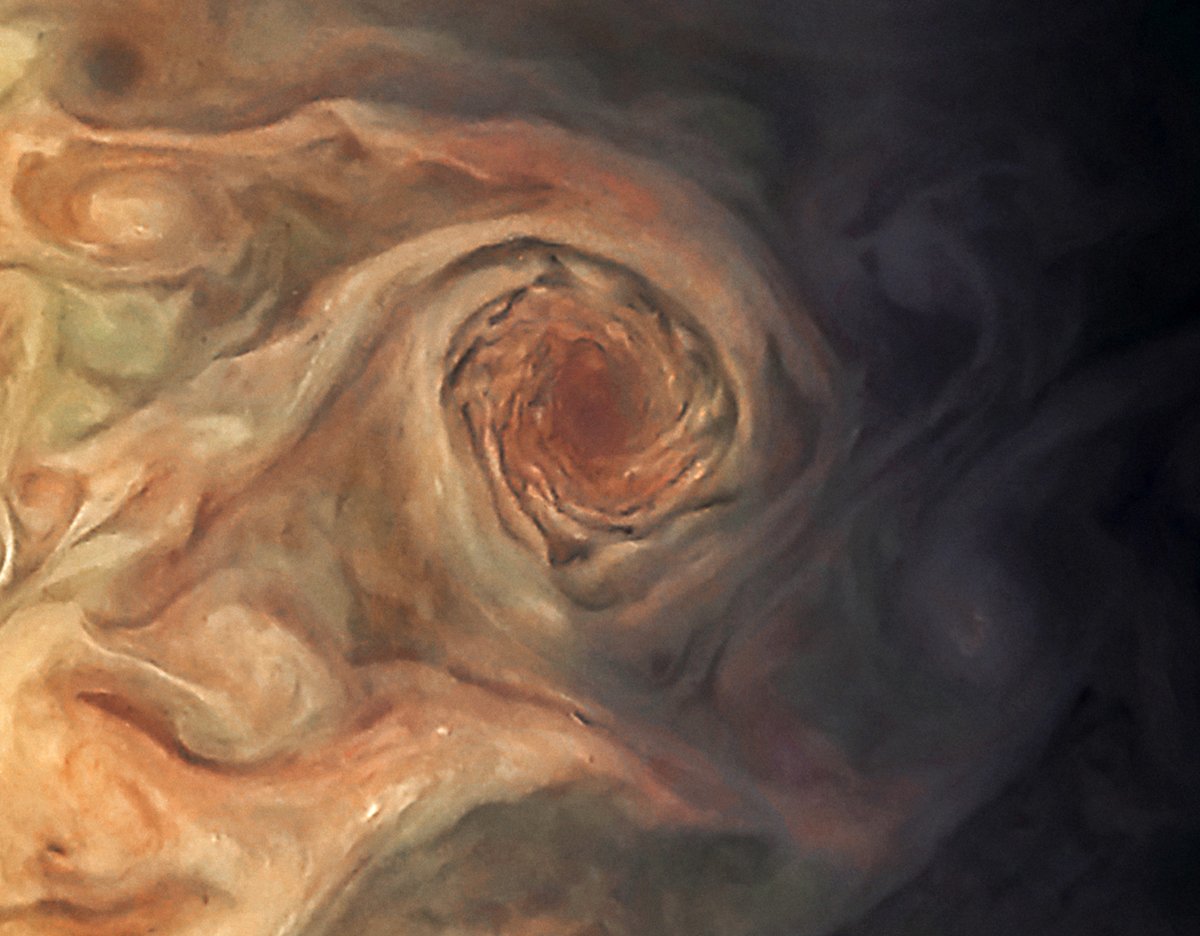
These photographs have been a big part of Juno’s purpose. From the very beginning of the mission, JunoCam was there for one reason and one reason only.
“JunoCam is on the spacecraft to take pictures of Jupiter and we specifically designed it to get pictures of the Polar Regions,” Dr. Candice Hansen, Senior Scientist at the Planetary Science Institute, explained at the outset of the Juno mission. “We have had a number of spacecraft that have flown pass Jupiter and taken pictures and movies of the equatorial plane, and so this mission is the first one that we can really get up over the Polar Regions.”
“All of our pictures are of the cloud tops,” she continued. “Jupiter is a ball of gas and all we will see are clouds, but they are very interesting, very dynamic clouds.”
Interesting clouds indeed. And Juno isn’t done capturing them. According to CNBC, the craft’s next flyby will take place on May 19th, and there will be many more after that before Juno eventually descends into Jupiter’s atmosphere in 2018, ending its mission.
(via Business Insider via Engadget)
Image credits: JunoCam screenshot courtesy of NASA. Header image by NASA/JPL-Caltech/SwRI/MSSS/Roman Tkachenko, all other photos credited in caption.





